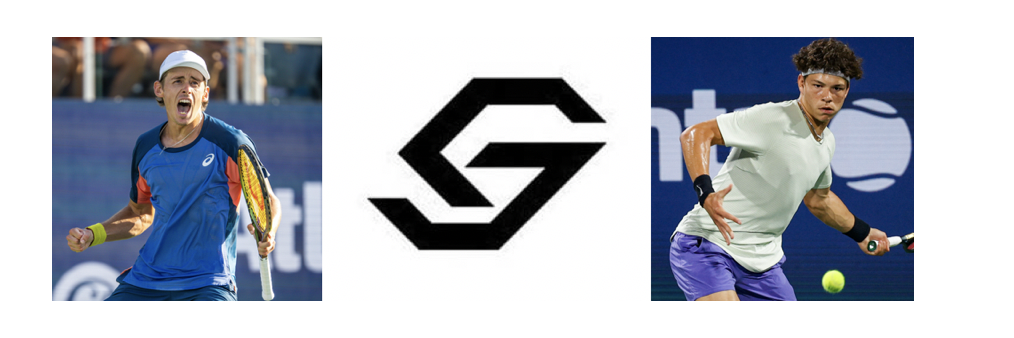
Ireland has been notably missing at global Grand Slam tennis events in recent years. The era of Conor Niland and Louk Sorensen, who reached commendable heights in the world rankings, has given way to a void which needs addressing.
Niland graced the main draws at Wimbledon and the U.S. Open in 2011, leaving a mark on Irish tennis as he reached a career-high 129th in the world.
However, since his time in the spotlight, Irish tennis has receded into obscurity at the elite level. This decline raises a perplexing question: why has a nation that has produced talented athletes in various other sports failed to maintain a presence on the international tennis stage?
The thriving nature of tennis as a social sport may have led national governing body Tennis Ireland to focus more on the grassroots level rather than propelling players onto the professional circuit. However, the absence of Irish players in Grand Slams undoubtedly represents a missed opportunity for inspiring the next generation of tennis enthusiasts.
Intriguingly, while Ireland has failed to produce any elite level players for more than a decade, the sport still garners plenty of interest among sports bettors. ATP Tour and WTA Tour events are covered extensively by Irish betting sites, highlighting just how popular the sport is on the Emerald Isle.
In a nation where there are plenty of other sports vying for attention, it is noteworthy that Irish punters remain eager to wager on tennis despite the lack of home-grown talent. If an Irish player emerged on the world scene, emulating three-time Grand Slam winner Andy Murray’s impact on Scottish tennis, it is scary to think what could happen to tennis in Ireland. Murray’s success sparked a nationwide fervour, inspiring countless youngsters to pick up a racquet. At his peak, he was ranked No. 1 and held on to the position for 41 weeks.
A similar phenomenon could occur in Ireland, with a homegrown star captivating fans and attracting even greater attention from Irish children.
The slogan “can’t see, can’t be” resonates strongly in the context of Irish women’s tennis. The solitary presence of Celine Simunyu at a modest world ranking of 992nd contrasts starkly with other nations. They include France, which boasts 78 ranked women, including the world No. 5 Caroline Garcia.
The disparity is not merely about numbers. It reflects a lack of role models that young Irish players can aspire to emulate. Comparisons with other successful Irish athletes in various sports emphasise the unique challenge faced by tennis. Kellie Harrington and Michaela Walsh have starred in boxing, while Leona Maguire and Rory McIlroy are giants of the golf world. The same success has proven elusive for Irish tennis players.
The cultural emphasis on education in Ireland may contribute to a reluctance to send young talents into the demanding world of professional tennis. Irish players may opt for the more secure route of pursuing college tennis in the Unite States, unlike some European counterparts who tough it out on the tour. The question then arises: is Ireland lacking the resources or the inclination to develop players who can compete at the highest level?
Niland’s experiences on the tour shed light on the challenges faced by Irish players. A lack of visibility for the game, insufficient international events, and a dearth of financial and coaching support hindered Niland’s journey. The absence of a structured senior system at home and the necessity for players to navigate the complexities of the professional circuit without adequate support further compound the issue.
Tom Carr’s insights into the life of his son Simon, Ireland’s highest-ranked player, underscore the pressures that players face.
“It is the administration that causes the pressure,” Carr said. “Do I book? Am I registered? Is there a hotel? He was in Belgium last (month), couldn’t get a room, couldn’t get a taxi, and had to rush down. It’s all that stuff. And then they get beaten, go back to a hotel room, and sit and brood on it for another few days until they fly off to the next tournament and do it all again.”
The need for emotional and financial support from parents becomes paramount as the tour becomes a gruelling test of resilience and determination. Despite these challenges, the potential for transformation remains. The success of Katie Taylor in women’s boxing serves as a powerful example of how a prominent figure on the international stage can revolutionize perceptions and inspire a generation.
The absence of Irish players in the tennis Grand Slams demands attention from Tennis Ireland and stakeholders in the country’s sports ecosystem. The potential benefits, not just in terms of athletic achievement but also in inspiring future generations, cannot be overstated.
A concerted effort to address the challenges faced by Irish tennis players, from visibility issues to funding and support structures, is essential to reignite Ireland’s presence in the world of tennis.


Leave a Reply